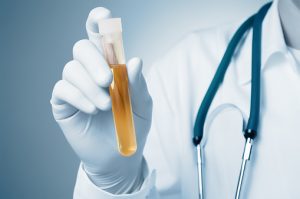 Our kidneys’ function is filtering the blood and producing urine that is primarily made up of water and other substances. The chemical composition of urine typically consists of uric acid, carbon, calcium, and nitrogen. And sometimes, crystals in urine can be found. When the normal functioning of the kidneys becomes compromised due to various abnormalities such as dehydration, it can lead to changes that result in excessive crystal formation.
Our kidneys’ function is filtering the blood and producing urine that is primarily made up of water and other substances. The chemical composition of urine typically consists of uric acid, carbon, calcium, and nitrogen. And sometimes, crystals in urine can be found. When the normal functioning of the kidneys becomes compromised due to various abnormalities such as dehydration, it can lead to changes that result in excessive crystal formation.
Causes and symptoms of crystals in urine
Crystal formation in the urine may be caused by any of the following:
Advertisement
Dehydration. Due to insufficient fluid intake, the few minerals in the urine can harden and form crystals. When there’s less water in the body, the concentration of composites such as uric acid radically increases. The result: crystals composed of uric acid found in the urine.
Urine pH changes. The pH level determines whether a solution is acidic or alkaline. A pH value below seven is considered acidic, while above seven is considered alkaline. Calcium oxalate crystals in urine can indicate if the urine is strongly acidic. In case when it is too alkaline, calcium phosphate crystals are more likely to form.
Also read: pH Levels in Urine: Foods That Change Urine pH Levels
Urinary tract infections (UTIs). When bacteria alter the pH value of urine, crystals may form.
Urolithiasis. When crystals have been in the urine for prolonged periods of time, one can develop urolithiasis or bladder stones. If these stones are large enough, one may suffer with constant abdominal pain.
Diet. Eating foods that are high in protein can in some cases lead to the development of crystals in the urine. Too much protein consumption may also increase the uric acid as well as calcium content of the urine, promoting crystal formation.
Generally speaking, there are no signs or symptoms indicating that you have crystals in the urine. When crystals are found they often point to other problems in the urinary system.
Types of urine crystals
The following are the most common types of crystals found in the urine:
- Uric acid crystals: Can vary in size and shape, but tend to look like rhomboids or parallelograms. They may be indicators of acute uric acid nephropathy or urate nephrolithiasis
- Calcium oxalate crystals: Found in acidic, neutral, or alkaline urine. These crystals are often described as looking like a “picket fence” or envelope shaped. They can be observed in cases of ethylene glycol toxicity.
- Triple phosphate crystals or struvite stones: Form in alkaline urine and composed of magnesium, ammonium, and phosphate. Often rectangular in shape, they are associated with UTIs caused by urea-splitting bacteria.
- Calcium carbonate crystals: Can be yellow or colorless, and appear as spheres or dumbbells. These are found in alkaline urine.
- Calcium phosphate crystals: Are colorless and have a shape like blunt-ended needles or prisms. These can be found in neutral and alkaline pH.
- Ammonia biurate crystals: Generally, appear as brown or yellow-brown spherical bodies with irregular protrusions. They can be found in alkaline urine.
- Amorphous crystals: Amorphous urates are found in acidic urine and appear as yellow during microscopic analysis but pink on gross analysis.
- Bilirubin crystals: Considered abnormal crystals in the urine, these form from conjugated bilirubin. They are needle-like in shape and yellow in color. These are frequently seen in several hepatic disorders.
- Cholesterol crystals: Appear colorless and rectangular, with a notch in one or more corners. They can be found in acidic urine.
- Cysteine crystals: Have a characteristic hexagonal shape and are colorless. They are often associated with inherited disorders that suggest a proximal tubular defect in amino acid reabsorption.
- Sulfonamide crystals: Flat needle-like structures that are often brown in color. These are associated with the use of sulfonamide medication, and their presence is also associated with kidney stone formation.
Treating crystals in urine
Depending on the cause of your particular case of crystals in the urine, your doctor will prescribe a corresponding treatment plan. However, there are some things that you can do on your own:
Manage urine pH. Consuming oxalate-rich products, such as coffee or chocolate, can increase the acidity of your urine.
Monitor protein intake. By limiting the amount of protein eaten, you will prevent your kidneys from overworking. The intake of purine-rich foods such as organ meats, sardines, and anchovies should also be reduced. It is better to consume foods like chicken, lentils, and salmon, but still in moderation.
Advertisement
Reduce salt intake. Salty snacks, processed foods, and fried items contain excessive amounts of salt, which can increase the calcium content of urine and make it more acidic.
Stay hydrated: Keeping your body well hydrated dilutes the urine and prevents crystal formation. You should aim to drink at least eight glasses of water a day.
Also read:
- Hematuria (blood in urine): Signs, symptoms, causes, prevention, and natural remedies
- Bubbles in urine: Causes, symptoms, and treatment tips
- Cloudy urine: Causes, symptoms, and treatments
